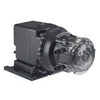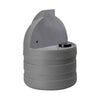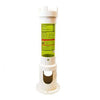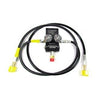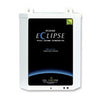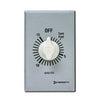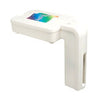What are pool chemical controller probes?
Chemical Controller Probes are devices that can detect, measure and process data related to the presence of chemical substances in pool water. These probes are made up of sensors that detect and analyze changes in the concentration of various chemicals present in a specific area.
Pool Chemical Controller Probes generally use electrochemical sensors to measure and process the concentrations of different chemical elements or compounds.
Chemical Controller Probes are designed to provide accurate measurements with minimal user intervention or maintenance requirements. They can provide real-time information about changing environmental conditions and help identify potential changes in pH and chlorine levels.
Chemical Probe Options Glossary
pH: pH is a measurement of the acidity of your water. Sensors are available in standard and gold tipped for salt water pools.
ORP: Oxidation Reduction Potential measures chlorine's ability to oxidize contaminants in your pool water. Sensors are available in standard and gold tipped for salt water pools.
PPM: Parts Per Million. Some sensors (such as Chemtrol) measure PPM rather than ORP. Probes are available for Free Chlorine, Total Chlorine, Bromine, and more. Precision of PPM probes vary. For example, a 0-010 PPM probe measures between 0 and 10 parts per million. A 0-200 PPM probes measures between 0 and 200 parts per million. As with pH and ORP, gold tipped is available for salt water pools.
Cable Length: A chemical controller and flow cell are typically installed in close proximity. As such, a cable length of 2 feet is usually sufficient. If your flow cell is not installed next to your controller, cable lengths of up to 10 feet are available.
High Pressure pH or ORP: Systems requiring the use of high-pressure probes are rare. Use one only if the manufacturer of your chemical control system specifies the use of high-pressure probes.
Cleaning Your Chemical Probes
Sensors should be clean and free from oil, chemical deposits, and contamination to perform at optimal levels. Depending on your bather load and characteristics specific to your facility, probes may need to be cleaned on a monthly or even weekly basis. Failure to do so could result in slow sensor response, a frequent need to recalibrate sensors, and inconsistent readings.
You Will Need
- Soft toothbrush
- Mild degreaser such as Joy or other non-acid based household dish detergent
- Regular toothpaste
- Fresh water
- Teflon tape
- Clean container with water to keep sensor tip wet while cleaning
Cleaning Steps
- Turn off your controller, pH feeder, and your sanitizer feeder.
- Close flow cell valves. If the probes are installed in-line and cannot be isolated, turn off the main circulation pump.
- Remove sensors from the flow cell. Sensors should be unscrewed by hand. Disconnect the connectors from the controller.
- Carefully place your sensor into your clean container to ensure that the tip remains wet.
- Remove old Teflon tape and discard.
- Use a soft toothbrush with regular toothpaste to gently scrub the white ring and the tips of the sensors located at the bottom of the probe.
- If you notice oil and/or calcium buildup gently scrub with a household dishwashing detergent.
- Rinse with the clean fresh water in your container.
- Replace Teflon tape.
- Reinstall the sensors by hand tightening only. Only turn the probes enough to stop leaking.
- Reconnect to the connectors on the controller.
- Manually test and balance your water. Your water chemistry should be at the optimal balance for adherence with your local health department requirements.
- Open the flow cell valves or turn the circulation pump back on.
- Perform a hard reset at the controller. (See Manual for details.)
- Give the ORP probe a minimum of 20-30 minutes to acquire its proper reading and make the displayed reading at the controller your new ORP set point.
- Check the pH reading at the controller against your manual test kit reading. If the two differ, you must calibrate your controller to read the same as your pH test kit. After recalibrating your pH, set your pH set point to the current displayed reading.
- Turn on your pH feeder and your sanitizer feeder.
Additional Tips
- Never allow a pH or ORP sensor to dry completely. Drying will damage the reference junction and void the sensor warranty.
- If storing sensors for an extended period, store sensors in the soaking caps provided with the original storage solution or clean water or distilled water. Take care to protect from freezing temperatures when not in use.
- If storage containers have been misplaced, store sensors individually in small glass or plastic containers with clean water, ensuring that sensor tips are covered.









